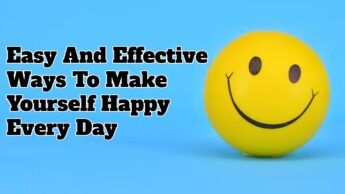You’ve just exited the theatre after seeing a movie and you’re ecstatic to have been among the first to see it. You’ve just finished listening to your favorite music and are ecstatic. But how long will your happiness last? Assume you binge-watched the Avengers or listened to your favorite music every day for a week. Will you still be as happy as the first time, and will you experience the same rush and thrill? No, humans have a tendency to return to a specific degree of enjoyment, which is known as “Hedonic Adaptation.” But hedonic adaptation encompasses every dream job we’ve ever had, every gorgeous apartment we’ve wished to rent, every automobile we’ve saved for, and every time we’ve said, “Imagine how happy I’d be if I had this or that.” Unfortunately, and much to your surprise, you are not as joyful as you expected to be when you get what you desired. Even if it is, this isn’t the level of pleasure you were expecting. Surprise, surprise, surprise! It isn’t long-lasting.
How Did Hedonic Adaptation Begin?
In a 1971 essay titled “Hedonic Relativism and Planning the Good Society,” psychologists Brickman and Campbell first mentioned this topic. It was known as the hedonic adaptation back then. Later in the 1990s, Michael Eysenck utilized the metaphor of a treadmill to illustrate how people are constantly trying to improve their level of happiness but never quite attain it when life events occur. This is how the phrase “hedonic treadmill” was coined.
Michael used the treadmill metaphor for a reason.
He compared the pursuit of happiness to a person on a treadmill who must continue to labor in order to remain in the same location. Doesn’t it suit the description?
Also Read: Tips To Boost Happiness And Defeat Hedonic Adaptation





